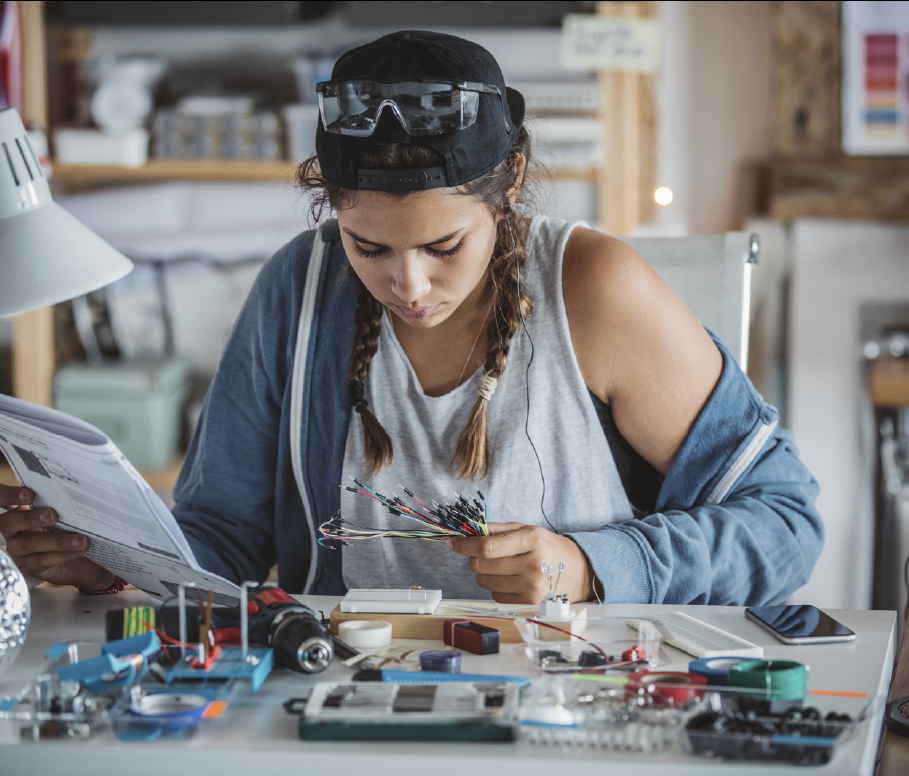April 26th marks World Intellectual Property Day, a day to celebrate and learn more about the critical role of intellectual property (IP) in fostering innovation. This year’s theme, “IP and Youth: Innovating for a Better Future,” recognizes the creativity and potential of young people to reshape the world and build a more sustainable future.
Around the globe, young people are driving change with fresh ideas and inspiring inventions, empowered and supported by IP protections. For example:
- Nineteen-year-old Kazumi Muraki invented the world’s smallest CO2 capture machine: CARS-α (Carbon dioxide Air-Recovering System version Alpha) or “Hiyassy,” a suitcase-shaped device designed to be used in everyday life. The Japanese student is passionate about stemming global warming, founding and leading the Carbon Recovering Research Agency (CRRA), an independent organization that conducts research on a variety of progressive environmental solutions.
- Columbia University students Jason Kang, Katherine Jin, and Kevin Tyan teamed up in their senior year of undergrad to start Kinnos Inc., with the goal of combatting infection and empowering healthcare workers. Their flagship product, Highlight®, is a powdered additive that is mixed into disinfectant solutions that allows users to visualize disinfection through color and enforces best practices. Highlight® has received many accolades, including recognition by the World Health Organization and the USPTO Patents for Humanity Award.
- At just 14, Neeam Al Harrasi is working to combat pollution and save our oceans. She has invented a new type of bioplastic using natural materials available in Oman, where she has filed a patent for her innovation. Neeam is the first IP Youth Ambassador in both Oman and the Arab Region. She wants to become a chemical engineer and “to learn more about IP in school too, as it is very useful to anyone who is creative and innovative…to anyone with a good idea really.”
We must continue to encourage and foster the next generation’s creativity and ambition, strengthened by a robust global IP ecosystem. Many organizations are committed to doing just that, by both investing in education, particularly in science, technology, engineering and math (STEM), and providing critical resources to the young people working to shape tomorrow.
- Chevron has numerous programs and partnerships to support students and educators. Its Thailand Partnership Initiative aims to strengthen Thailand’s competitiveness and innovation by improving STEM education. The eight-year, $35 million public-private partnership works with Southeast Asian Ministers of Education Organization Regional Centre for STEM Education (SEAMEO STEM-ED) and many others to build a strong and enduring educational network.
- Around the world, Amgen’s Biotech Experience (ABE) program has empowered teachers to bring biotechnology into their classrooms. Studies show that the program has a significant impact on students’ interest in biotech and science learning. ABE has reached nearly 85,000 students since its launch in 1990 and expanded to more than 1,700 schools in Asia, Europe and North America.
- AstraZeneca has partnered with Learning Undefeated and Discovery Education to create Generation Health: How Science Powers Us, which provides hands-on learning to middle school students around the world. The program aims to “engage students in learning about the science behind their own health through the lens of STEM.” During the pandemic, the online modules were used to minimize education disruption.
The private sector can – and should – continue to play a crucial role in championing education and building a sustainable future for the youth of the world. Their new ideas and inventions have the potential to revolutionize everyday life, and we must ensure that strong IP systems support and enable these innovations.
Around the globe, young people are driving change with fresh ideas and inspiring inventions, empowered and supported by IP protections.


